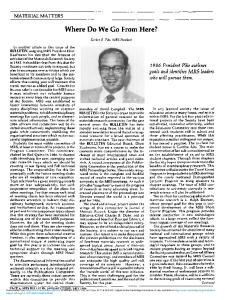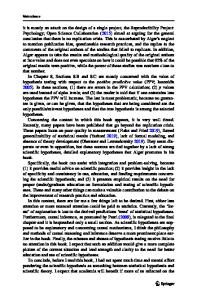From Here to Infinity
When the author was a Mathematics student at the University of California, Los Angeles (UCLA), there was a mosaic on the sides of the Mathematics building containing various symbols. One of these was the number 3 × 1074, which is a shorthand way of writin
- PDF / 1,678,904 Bytes
- 37 Pages / 476.22 x 680.315 pts Page_size
- 49 Downloads / 339 Views
The Infinite! No other question has ever moved so profoundly the spirit of man… Mathematician David Hilbert The interior of our skulls contains a portal to infinity… Writer Grant Morrison When the author was a Mathematics student at the University of California, Los Angeles (UCLA), there was a mosaic on the sides of the Mathematics building containing various symbols. One of these was the number 3 × 1074, which is a shorthand way of writing the enormous number 3 followed by 74 zeros. The author was told that this was the number of atoms in the observable Universe, although it has now increased over the years to roughly 1080. The qualification ‘observable’ is important here and represents a sphere of about 93 billion light- years in diameter, though the actual shape of the entire Universe is still not known1. These big numbers are, of course, a very rough estimate, since such a calculation is necessarily difficult to make. But nevertheless, the number is finite although the Universe itself is possibly infinite. So, if the number of atoms in the observable Universe is finite, what then, if anything, in the known world is infinite? The answer is: possibly nothing. Certainly, in Physics, there are no measurable quantities that are infinite, although the term does arise. According to theoretical physicists Stephen Hawking and Leonard Mlodinow in their very readable book, The Grand Design (see Bibliography), Einstein’s Theory of Relativity “predicts It should be noted that the number 3 × 1074 does appear in the study of phylogenetic trees and is the number of unrooted trees generated by 50 taxa, for those who know some Biology. 1
© Springer Nature Switzerland AG 2020 J. L. Schiff, The Mathematical Universe, Springer Praxis Books, https://doi.org/10.1007/978-3-030-50649-0_2
39
40 From Here to Infinity there to be a point in time at which the temperature, density and curvature of the universe are all infinite, a situation mathematicians call a singularity. To a physicist this means that Einstein’s theory breaks down at that point and therefore cannot be used to predict how the universe began, only how it evolved afterwards.” Similarly, singularities have been associated with the center of a black hole where spacetime curvature is supposed to become infinite. Mathematicians are very familiar with the term singularity, as this is a point where certain functions become arbitrarily large the closer we get to them. A simple example is the function, 1 y= 2. x As the value of x gets closer and closer to zero, the value of y becomes arbitrarily large2. The value of the variable x can get as close as we wish to zero, but we must stay away from the point x = 0 itself, because when x is at that point, y simply becomes undefined. Here, the point x = 0 is a singularity for this particular function (Fig. 2.1).
1 Figure 2.1: The graph of y = 2 showing how the value of y becomes infinitely large x as x approaches the value zero. We can say that y ‘becomes infinitely large’ if we understand that term to mean ‘becomes arbitrarily
Data Loading...











